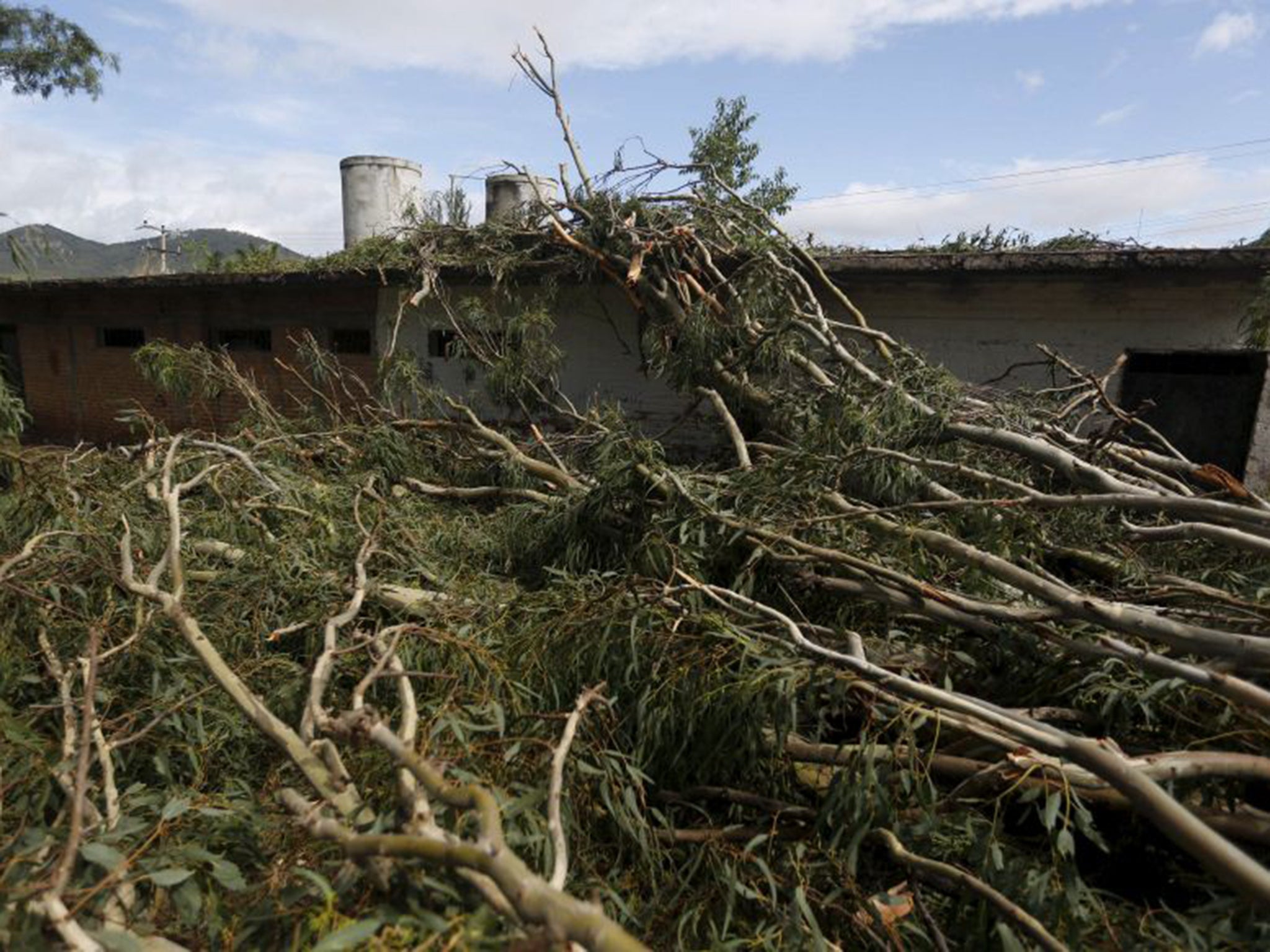Hurricane Patricia hammers coastal areas and causes widespread damage in western Mexico
There were no early reports of death, but flooding and landslides are still a risk

Hurricane Patricia, at one point the strongest ever recorded in the region, crashed into western Mexico with winds of up to 165mph on 24 October, hammering coastal areas and causing widespread damage. But, seemingly, there was no loss of life
While mowing down trees, flooding streets and battering buildings, Patricia caused less carnage than had been feared. It rapidly weakend in the mountains that rise up along the Pacific coast, and was later downgraded to a tropical depression as it headed through central Mexico.
Tens of thousands of residents and tourists along the coast and beyond were evacuated to improvised shelters as the storm advanced. Many felt they had escaped lightly when the storm failed to hit any large population centres as it moved inland. It was expected to have dissipated entirely by late last night, according to the US National Hurricane Centre.
Patricia’s edges brushed the major port of Manzanillo. Port director Jorge Bustos said the facility was still closed early on 24 October, but he expected it to be open again by the afternoon. “We had no major damage,” he said. “Sure, gates, doors, some windows, light roofs, that sort of thing, but nothing that was a risk to our operations.”
Further north, around 15,000 tourists had been hastily evacuated from the beach resort of Puerto Vallarta. But many were able to leave shelters and return to their hotels. “I don’t think there’s going to be a big problem,” said Dario Pomina, 43, manager of the Posadas de Roger hotel. “Things are more or less OK.”
However, it was clear that heavy rain was expected to continue across large parts of the north of the country, bringing with it the risk of flash floods on low ground and mudslides in mountainous regions. Mexico’s President Enrique Peña Nieto warned people to stay alert in a televised address, with around 400,000 people living in vulnerable areas, according to Mexico’s National Disaster Fund.
The hurricane was expected to produce total rainfall of eight to 12 inches (20-30cm), with isolated maximum amounts of 20ins over the Mexican states of Nayarit, Jalisco, Colima, Michoacan, and Guerrero throughout 24 October.
The area around the Nevado de Colima volcano in the state of Jalisco is particularly vulnerable, having registered almost 12ins of rain in 24 hours. Ash from the volcano, which has been increasingly active this year, could combine with heavy rainfall to trigger vast mud flows, according to government warnings.
Residents of Las Juntas, a village where the Ameca and Mascota rivers meet about six miles from Puerto Vallarta, were being evacuated on 24 October after a rapid rise in water levels overnight caused flooding, emergency services spokeswoman Veronica Diaz said.
Some residents on the coast where Patricia came ashore described an enraged sea that crashed into hotels, and howling winds that toppled trees and telephone posts.
“The waves were coming into the hotel,” said Domingo Hernandez, a watchman at the Barra de Navidad in the resort village of the same name in Jalisco state.
Hurricane Katrina - in pictures
Show all 20“All the streets here in town are full of downed trees all over the place,” said Mr Hernandez, who described Patricia as the strongest storm he has seen in a quarter-century of living on the coast. “You have to make your way around all the downed telephone poles, the power lines, the trees.”
Hurricane Patricia formed suddenly on 20 October as a tropical storm and quickly strengthened to a hurricane. Within 30 hours, it had become a Category 5 storm, catching many off guard with its rapid growth. By 23 October, it was the most powerful recorded hurricane to have hit the western hemisphere, with a central pressure of 880 millibars and maximum sustained winds of 200 mph. The movement of the storm had led to fears that it could cause a major loss of life. Meteorological authorities compared it to Typhoon Haiyan, which killed more than 6,300 people in the Philippines in 2013.
However, Patricia’s ferocious core was relatively small, with hurricane force winds extending only 35 miles (55km) from the centre, the Hurricane Centre said. This meant Puerto Vallarta and Manzanillo were spared the worst.
In Puerto Vallarta, Brian Shelley, a tourist from Chicago, rode out the storm eating burgers with other guests at a boutique hotel on a hill. After talking one of his panicked travelling companions into staying, he was glad that Patricia turned out to be less deadly than feared. “I’ve seen bigger waves on normal days,” he joked.
In Manzanillo, Ramona Delgado, 45, who manages an apartment complex, spent the night in darkness at home with her two children, but said by the afternoon of 24 October the lights were back on.” It scared us a lot, we thought Manzanillo was going to disappear,” she said. “There are only fallen trees on our road.”
The airports in Puerto Vallarta, Manzanillo and Tepic were closed on 23 October, which meant residents and tourists had hunkered down in shelters along the coastal stretch.
The Sokols, a family of five from suburban Detroit, were supposed to fly out of Puerto Vallarta on 23 October but ended up in a shelter at a university after their flight was cancelled. “It’s amazing, It went from the worst in history to just some heavy rain,” Susanna Sokol said. (Reuters; AP)
Subscribe to Independent Premium to bookmark this article
Want to bookmark your favourite articles and stories to read or reference later? Start your Independent Premium subscription today.

Join our commenting forum
Join thought-provoking conversations, follow other Independent readers and see their replies